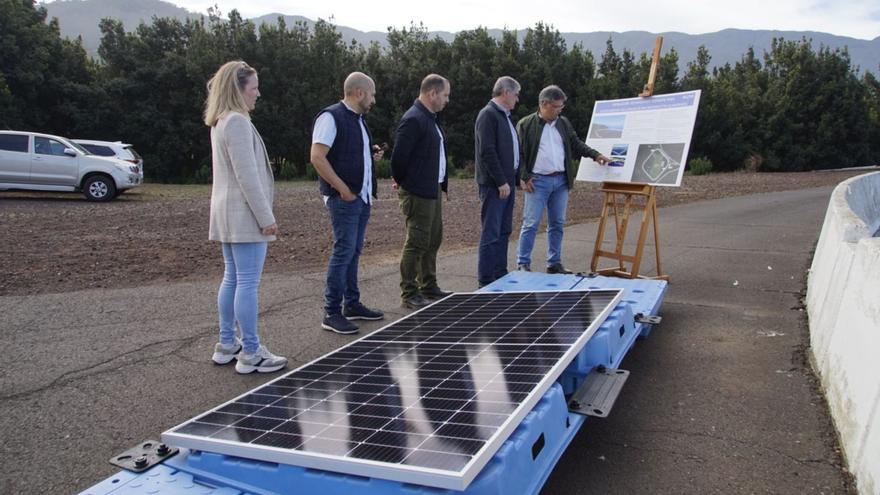
The Council of Tenerife promotes the first floating photovoltaic energy project in Canary Islands. The insular president, Pedro Martín, stresses that it is a “pioneering” initiative that will turn the San Antonio raft –located in La Matanza de Acentejo– into a floating photovoltaic technology test bench, whose conclusions will be used for the development and implementation of this technology on the Island. For his part, the Island Councilor for Agriculture, Livestock and Fisheries, Javier Parrilla, explains that “up to three different types of generators will be placed to study the performance of each of them and choose the most efficient option, which will be the one that we will replicate in the rest of the rafts ». The insular network includes another twenty infrastructures throughout the Tenerife geography. From north to south of Tenerife.
Pilot project
The public company Balsas de Tenerife (Balten), dependent on the Island Corporation, presented this week the pilot project for the installation of a system of floating solar panels on the Matanzas raft. The insular president, Pedro Martín, highlights the “pioneering initiative in the Canary Islands” that will turn San Antonio into a laboratory to determine the subsequent development and implementation of this technology in the rest of the Island”. The presentation was also attended by the mayor of La Matanza, Ignacio Rodríguez Jorge, and the manager of Balten, Ana Sánchez.
Tender
The project, which will go out to public tender in the coming weeks, has an estimated budget of 431,353 euros, charged to the Next Generation funds of the European Union (EU), and will allow the installation of 128 445-watt monofacial solar panels ( W) and 128 bifacials of 445 W with the idea of being able to study and compare both photovoltaic modules.
Investigation
Four large research blocks are proposed. In the first place, the energetic-economic, in which the total and individual production of the generators, the consumption behavior of the pumping or the efficiency of the photovoltaic panels, among other aspects, will be valued. Secondly, the environmental study, focused on the control of the impact of the installation, the eutrophication of the waters -excess contribution of inorganic nutrients from human activities- which produces an uncontrolled proliferation of phytoplanktonic algae and causes adverse effects on the affected water masses, oxygen, temperature or pH, among others.
The third line of work of this sustainable project is that of the meteorological field (control of the parameters and incident solar resource) and, finally, the structural field (control of the parameters of the floating structures of the plants).
Javier Parrilla recalls that floating solar panels reduce evaporation by up to 33 percent, improve water quality (by generating shadows that prevent eutrophication), and favor the maintenance of the ponds, by producing less sludge. In addition, they do not consume land and generate 10 percent more energy when the panel is cooled.
The action is part of the Energy Rebalancing Plan launched by the Cabildo, through Balten, and endowed with 1.5 million euros. The objective is to reduce energy and environmental costs at eight facilities of the dependent entity, limiting CO2 emissions into the atmosphere.
key for irrigation
The San Antonio pond irrigates approximately 800 hectares of crops. Specifically, it distributes by gravity to the midlands of La Victoria and La Matanza, and two pumping systems allow water to be carried to Pino Alto in Santa Úrsula and Fray Diego in Tacoronte. It has a capacity of 157,008 cubic meters. The 16 in North Tenerife can store 3,434,542. At the end of last year, in December, the latest known data, San Antonio was 60% full and the northern infrastructures were 30% although two of the largest, Montaña de Taco, in Buenavista, and Benijos are empty due to waterproofing works. .
reclaimed water
The Cabildo de Tenerife has insisted throughout the current mandate on the importance of reclaimed water for the primary sector as a guarantee of agricultural irrigation. Balten highlights the importance of the system for the stability of the supply at times with low rainfall rates. The insular network consists of 21 rafts, with a total capacity of more than five million cubic meters. Of these, 3.4 are stored on the north slope and 1.6 on the south.















